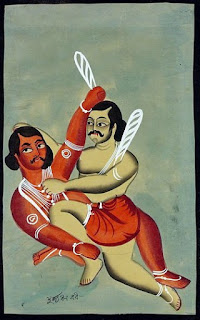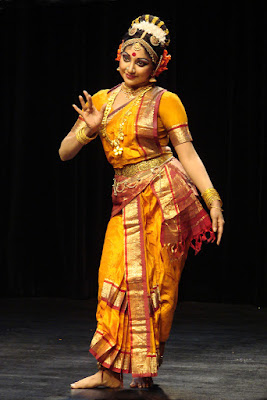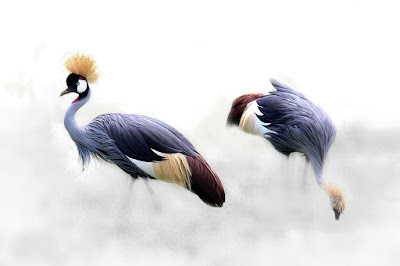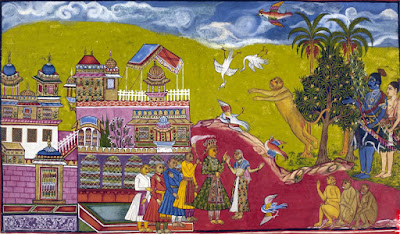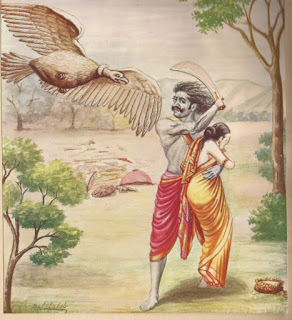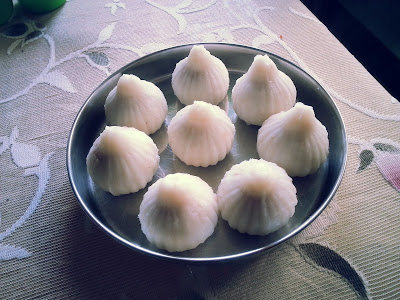Reading Notes: Mahabharata, Part C
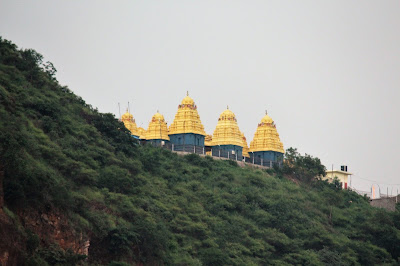
Image: Kanaka Durga Temple located where Arjuna met Shiva In "Arjuna and Shiva" Arjuna is chosen to live in austerity in the Himalayas until he sees a vision of the Great God and gains the power to defeat any enemy. This practice is a type of penance that involves meditaition or "tapasya." The place Arjuna found to conduct his penance was the Indrakeeladri hill where the Kanaka Durga Temple is now. The hill is located in Vijayawada, Andhra Pradesh about at the midpoint of India's east coast. Arjuna began his penance by not eating anything but fruit and leaves that had already fallen to the ground. Through his meditation and devotion he was able to reduce his consumption steadily until in the fourth month he did not eat anything at all. "He was able to live on air alone." Arjuna also bathed and cleansed himself so frequently that the skin on his head was very dry and covered in lightning bolt shaped cracks. He would also hold his arms ou

